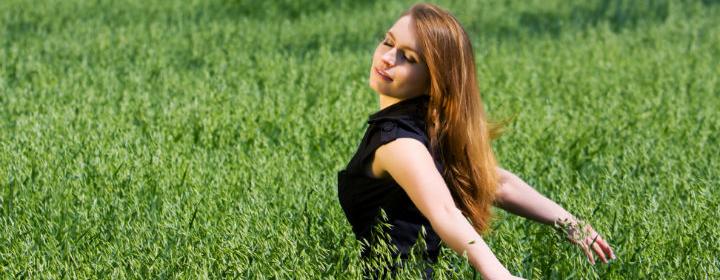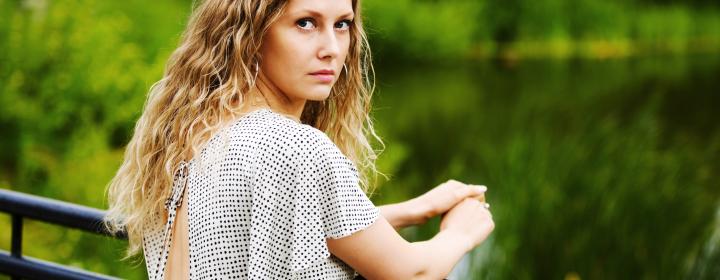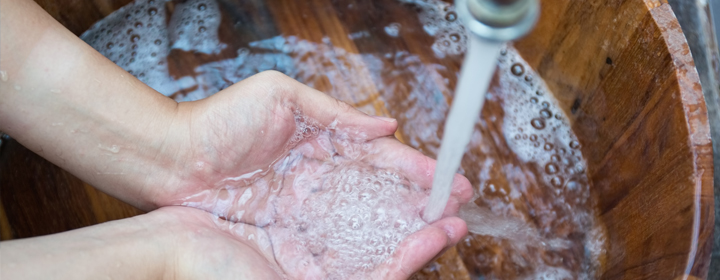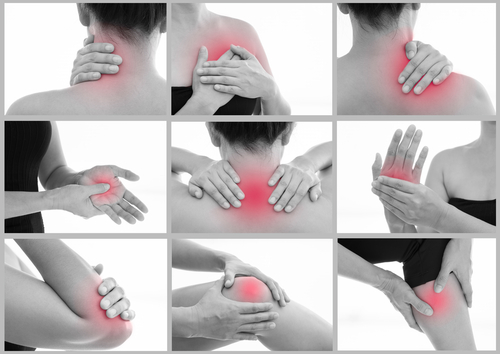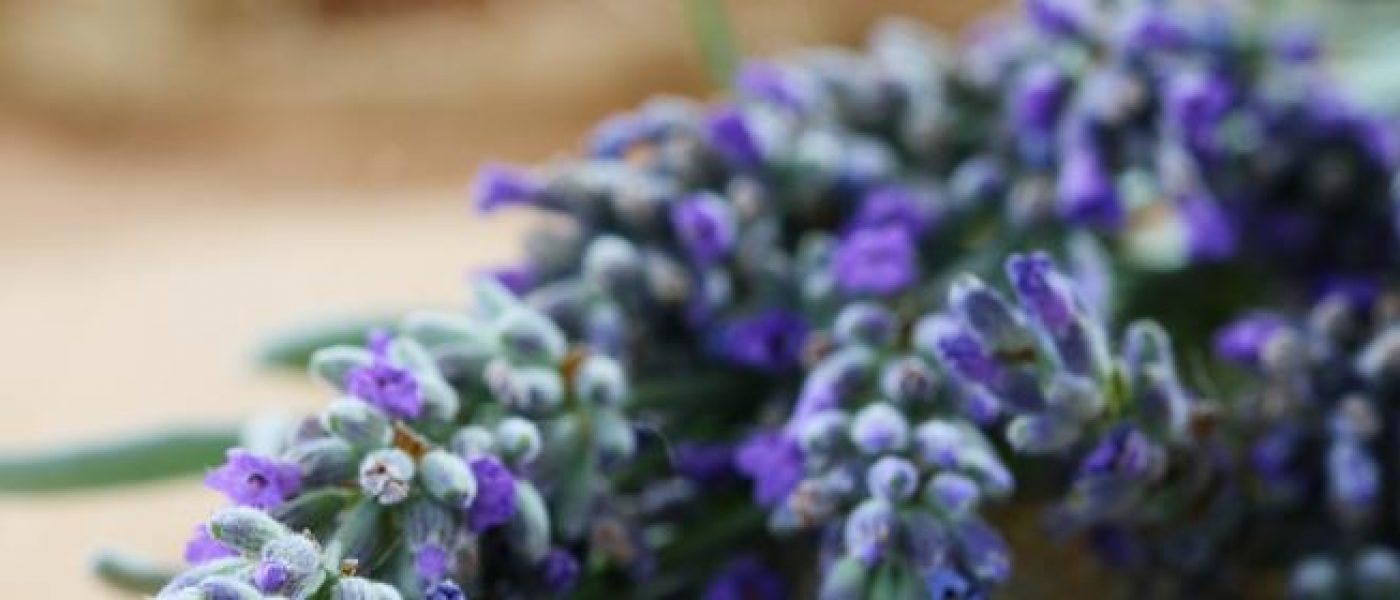
Det er en jammerdal at se på nogle af de produkter, der er i Danmark.
Entusiastiske (nye) producenter eller distributører kaster sig over udenlandske produkter uden at ane noget om urter, om fremstillingsmetoder eller aktive indholdsstoffer.
Nogle af de grelle eksempler ser vi, når der er kastet 20 tørrede urter ned i en lille tablet, hvorefter befolkningen bli´r bildt ind, at det er en gammel indiansk recept. Flere af urterne har aldrig groet i USA… Det mindste man må forlange er, at der er en sikkerhed for, at der er nok aktive stoffer repræsenteret i produktet, så man kan formode, at der også er en effekt af produktet. Modargumentet kan så være, at det langtfra er alle aktive stoffer, som er fundet endnu på trods af megen forskning i den enkelte urt. Men det godtgør stadig ikke for små doser. Til gengæld er det vigtigt, at producenten anvender en fuld-spektret ekstrakt. Altså en ekstrakt, som efter vand er fjernet, sørger for at alle stoffer fra planten stadig er til stede i slutproduktet så også de stoffer, som endnu ikke er kortlagt kommer med… Læs her, hvordan det kan gøres…
Assuring Quality in Herbal Products Manufacture
Michael Thomsen, N.D., M.H., Technical Manager, Planet Herbs and HerbResearch International In the wider community, herbal medicine is often regarded as second best to allopathic medicine. This is partly because herbal medicine was until relatively recently only empirically rather than scientifically verifiable. Furthermore, extreme variations in the quality of herbal products have been too great to guarantee their consistent efficacy. Contemporary manufacturers of herbal products must rectify this by providing herbal products of consistent quality and efficacy. Quality in botanical medicine falls into six areas: quality raw materials; good laboratory practice; good manufacturing practice (GMP); standardized manufacturing principles; and pharmacologically active dosages. To begin with, suppliers of raw botanical materials must support sustainable agricultural methods. As part of this, it is vital that a supplier use only wildcrafted herbs that have been harvested in an ecologically sensitive way. Whenever possible growers of herbs should be certified by a government agency or other trustworthy certification organization, as using only organic methods for growth.
The manufacturer should thoroughly check all incoming raw materials, as it is not uncommon to receive cut herbs that contain stones, packing material, and other extraneous substances. Suppliers must also guarantee that all raw materials and finished products be free of pesticide and herbicide residues, heavy metals, and other contaminants. An increasing problem in this last regard is botanical substitution, of which one widespread aspect is replacement of the Chinese herb Stephania tetranda by Aristolochia fangchi which has been shown to be the likely cause of several cases of renal failure.[1] Stephania tetrandra is anti-inflammatory, hypotensive and immunodepressant. It is indicated for hypertension, angina, autoimmune and chronic inflammatory diseases, it has not, however, been used traditionally for weightloss. Such potential problems make it vital that herbal manufacturers use high-performance thin-layer chromatography (HPTL), with comparison of the results against a certified standard, to verify the authenticity of herbal species. To ensure the authenticity of raw materials, manufacturers should ideally work directly with their herbal suppliers. Once the identity of a raw material has been established, it must be further tested with high-pressure liquid chromatography (HPLC) to ensure that it contains adequate levels of the desired active constituents or marker compounds. It is often useful to compare the HPLC tracing of the raw material from an herb with the certified standard for the material. It is not uncommon to discover inconsistencies, such as absent or extra peaks in the HPLC tracing. Applying photodiode array (PDA) detection can further enhance the analysis by examining each peak detected by HPLC in details. PDA analysis provides a three-dimensional plot that assists in examining the purity of each of the HPLC peaks.
Another method for analyzing the compounds extracted from an herb is ultraviolet (UV)-visible spectroscopy. This technique, which measures the wavelength and intensity of absorption of UV and visible light by a sample, can be of great use for quantitative analyses of herbal extracts. However, although very useful for evaluating a single substance, it is of limited value for sample identification since it cannot be used for assaying complex herbal substances. Nonetheless, UV-visible spectroscopy is valid as an in-process method for checking the effectiveness of an extraction process. Results of UV-visible analyses should be verified with HPLC. A UV-visible assay of a milk thistle (Silybum marianum) extract may, for example, give a reading of 30% silymarin, whereas the more accurate result provided by HPLC may show only 20%.[2]
Fundamental Principles of Manufacturing
Although it is not yet mandatory in the United States, products made from herbal extracts should be manufactured according to the pharmaceutical code of good manufacturing practice (GMP) as prescribed by the relevant authorities. The U.S. Food and Drug Administration has published such a code, with the minimum GMP requirements. The FDA web site for this (http://www.cgmp.com) provides access to these requirements. The most fundamental feature of herbal products manufacture is that different herbs require different methods of processing. The first step is the extraction, of which the most common methods are maceration, cold percolation, temperature-controlled percolation, dual-process percolation, CO2 extraction, and specific solvent extraction. In this context, it is important in milling dried herb material, to choose the ideal particle size for extraction. Although a smaller particle size yields a larger surface area, which in turn increases the efficiency of extraction, particles of too small a size may block the percolator. Conversely, with a 6-mm particle mesh size, solvent may pass too rapidly through the percolator and extract too little of the desired constituents of an herb whereas a 3-mm mesh size may ensure the extraction of a high percentage of active constituents at a moderate solvent flow rate.
Maceration is simply the soaking of a cut and milled herb in a suitable solvent, known as the menstruum, which is often a combination of water, ethanol or glycerol. This is done for a specified time, after which the herb is drained and pressed. This method is used mainly for the extraction of water-soluble constituents. The cough-soothing mucilage in marshmallow (Althaea officinalis), for example, is well extracted in a combination of water and glycerol. For most other constituents, maceration is an inefficient extraction method, often drawing out less than 70% of the active constituents of an herb based on 1 part of drug dissolved in 5 parts of solvent (a 1:5 tincture).
The British [3] and German [4] pharmacopoieas recommend that milled herb materials be macerated in a percolator for 24 hours before percolation itself is begun. Nevertheless, an examination of the extraction of Eleutherococcus senticosis (Siberian ginseng, eleuthero) for total solids, and with HPLC for eleutheroside E content, found no difference with 12 hours as opposed to 24 hours of maceration, although maceration for less than 4 hours significantly decreased the extraction of active constituents. In another aspect of this same study, it was found that covering the cut and soaked herb with menstruum and raising the temperature (slightly above room temperature) of the maceration process increased the extraction of active constituents.[5] Cold percolation involves the packing of a cut, milled, and wetted herb into tall, cylindrical percolators. After a suitable maceration period, extra solvent is added at the top and allowed to seep through the percolator.
A simple one-process percolation is fairly efficient, extracting upward of 90% of the active constituents of an herb and yielding a maximum ratio of 1 part of drug per two parts of solvent (whereby 1 kg of herb produces 2 liters of extract). As one example, cold percolation is suitable for the extraction of Echinacea spp., whose immune-enhancing alkylamides are heat-unstable. In contrast with Echinacea, most herbs are better extracted using temperature-controlled percolation at varying temperatures above room temperature. Figure 1 shows an HPTLC of an extract of goldenrod (Solidago virgaurea) extracted in 50% ethanol at 0 C, 25 C, and 55 C, respectively. Figure 2 illustrates the HPLC results for the same extracts. It is clear from Figure 1 that the intensity of the colored bands increases as the temperature increases. Figure 2 shows that the total solids in the goldenrod are extracted twice as well at 55 C as at 0 C.[2] In the case of some herbs, research has identified several different active principles, some of which are water soluble and others of which are water insoluble. In such cases, a dual-process percolation technique may be appropriate. For example, the immunomodulatory properties of ethanolic Echinacea extracts are due mainly to aklylamides and polyphenols such as chicoric acid. Because of the oil-like character of the nonpolar alkylamides, they are extracted first with a high-alcohol menstruum.
This extraction should take place at low temperature because of the heat sensitivity of the alkylamides. To maximize the extraction of the polar, water soluble polyphenols, (including chicoric acid), the second extraction is done with a lower-alcohol menstruum and at a higher temperature. The two extracts are combined to yield a superior, broad spectrum, highly potent Echinacea extract.[6] A further and relatively new process of extraction is hypercritical carbon dioxide extraction. Under high pressure and moderate temperature (approx. 31°C) CO2 becomes a fluid with the ability to dissolve different organic substances. The feature of a supercritical fluid is that the viscosity is like gas, the density is like liquid. This means it will flow through the herb material more like a gas and dissolves the constituents more like a liquid. Nearly 100% of the CO2 is recycled and returned to the extractors. CO2 extraction is used in withdrawing essential oils from their sources, and in high-volume extractions, such as extraction of the ingredients of hops for beer brewing. Beyond the extraction techniques already described is specific solvent extraction. A multistep extraction with specific solvents, and a subsequent purification process, were used by the German manufacturer, Schwabe, to produce the first standardized Gingko biloba extract, Egb761. As a dry extract, Egb761 consists of 24% flavone glycosides (quercetin, kaempferolm isorhamnetin) and 6% terpene lactones (gingkolides, bilobalide), in addition to various organic acids and other constituents. The specific solvent extraction used in its manufacture yields a highly concentrated extract (50:1) where 50 parts dried herb material yields one part concentrated extract with a consistent level of certain active compounds as well as of undesirable gingkolic acids. Although many other gingko extracts have since come onto the market, it cannot be assumed that they will have the same beneficial effects as Egb761 until their clinical efficacy has been verified.
Maximizing the Extraction of Active Constituents
Although the German, British, American and several other pharmacopoieas prescribe certain manufacturing methods, herbal products manufacturers should investigate certain variables involved in botanical extraction. Consider, for example, the process developed to extract eleutheroside E from E. senticosus, and the HPLC method developed for quantifying this eleutheroside. The eleutherosides that are the active constituents of eleuthero are a group of quite diverse compounds, and include lignans in the form of eleutherosides D and E (syringaresinols) and B4 (sesamin); derivatives of phenylpropane including eleutheroside B (syringin), caffeic acid, and chlorogenic acid; coumarins including eleutheroside B1 and isofraxidin; and sterins including eleutheroside A (daucosterin). Eleutheroside E and chlorogenic acid, which are known to contribute significantly to the adaptogenic and immune-enhancing activities of eleuthero, were chosen as marker compunds for the extraction process. The effects on the extraction efficiency of the percentage of ethanol in the menstruum, milled particle size of the source herb, intermediate maceration, and temperature were investigated. It was found that eleutheroside E is best extracted from E. senticosus in 30 to 50% ethanol, whereas chlorogenic acid is best extracted in 40 to 60% ethanol. The ranges of the ethanol concentrations needed for both extractions illustrate the differences in quality of raw materials which can occur between batches of an herb. However, when the curves of ethanol concentration versus percent extraction for the extraction of the two components were normalized and superimposed on one another, it was concluded that the maximum single-step extraction of both eleutheroside E and chlorogenic acid takes place at 40 to 60% ethanol.[5]
Types of Marketed Herbal Extracts
Herbal extracts are marketed in liquid and dry solid form. Liquid extracts fall into the two categories of nonstandarized and standaridized extracts. Nonstandardized liquid extracts are also known as tinctures or fluid extracts. The fluid in such extracts is usually a mixture of ethanol and water–which are considered the most effective solvents for commercial herbal products–but may also include glycerol and other liquids. The ratio of active herbal component to solvent varies from 1:1 to 1:5 or less. Because the level of active constituent(s) varies from one batch of an herb to another, so will their levels vary in the finished product. Notwithstanding this, quality control can still be applied to a tincture by using HPLC to quantitate its active constituents or the marker compounds against which active components are compared, although the concentration of active component may not be stated on the product label.
Standarized liquid herbal extracts can be subdivided into the categories of “true” or conventional standardized extracts and “full-spectrum” standarized extracts. True standardized extracts are standarized to one or more constituents by removing these constituents from their herbal sources through the use of specific solvents. The final liquid herbal product is standardized to these constituents at the expense of its other constituents, usually because the latter are considered inert, less active, or harmful, and must be removed so as to concentrate the active constituents. Examples of standardized extracts are Gingko biloba Egb761; described earlier and consisting of a 50:1 dry concentrate, where 50 parts dried herb material yields one part concentrated extract standardized to contain 24% gingkoflavone glycosides and 6% terpenes, and silymarin, extracted from milk thistle (Silybum marianum) as a 70% concentrate. Following removal from their herbal sources, these extracts are dried through spray- or freeze-drying techniques into powders from which their standardized liquid extracts are prepared.
By contrast with true standardized extracts, full-spectrum standardized extracts contain the full spectrum of constituents found in the raw herbal sources from which they are made, while also containing a pre-established level of a marker compound that is among these herbal constituents, and which may or may not be the active ingredient of the final product. Standardization of the final product is achieved by varying its herb-
to-solvent ratio in such a way as to produce a particular final concentration of the marker compound. HPLC is used to verify the level of marker compound in the product. Examples of full-spectrum standardized liquid extracts include extracts of kava (Piper methysticum), which are standardized to contain not less than 20.0 ng/mL kavapyrones; extracts of licorice (Glycyrrhiza glabra), standardized to contain not less than 30 ng/mL glycyrrhizinic acid; and extracts of St. John’s wort (Hypericum perforatum), standarized to contain not less than 0.7 mg/mL total hypericins.[6] Dry extracts of herbal products, marketed in tablet or capsule form, are prepared as described earlier by the spray- or freeze-drying of liquid extracts of the appropriate plants.
Dosage
Of concomitant importance with the need for quality raw material and GMPs is the issue of appropriate dosage of an herbal product. In traditional medicine systems, including Traditional Chinese Medicine, the herbs are often used as decoctions and in formulations. How would this translate to a modern preparation of a 1:2 by percolation? As 1 mL of a 1:2 is equivalent to 500 mg herb, one can easy to calculate the daily dose. As the table below illustrates, however, the converted doses from those recommended in TCM and by the Eclectics may result in very high doses which are neither practical nor desirable.
| Herb | TCM Daily Dose by decoction | Daily Dose, extract equivalent | Typical Daily Dose of 1:2 as used by herbalists today |
| Dong Quai | 3-15 g | 6-30 mL (1:2) | 4-6 mL |
| Licorice | 3-12 g | 3-12 mL (1:1) | 2-6 mL |
| Ginger | 3-9 g | 6-18 mL (1:2) | 1-2 mL |
| Herb | Eclectic Daily Dose | Extract Equivalent | Typical Daily Dose |
| Golden seal | 0.9-10.8 g | 3-32 mL (1:3) | 2-4 mL (1:3) |
| Valerian | 2.1-6.0 g | 4-12 mL (1:2) | 4-6 mL (1:2) |
| Yellow dock | 1.8-10.8 g | 3-21 mL (1:2) | 4-6 mL (1:2) |
The recommended dosages of herbal products have been established by tradition and clinical trial, and are published in textbooks and other sources. Thus, for example, the British Herbal Pharmacopoiea [3], [7] and the German Commission E [9] monographs already provide valuable information about dosage, and the continued development of the American Herbal Pharmacopoiea [9] is likely to make it a future standard for herbal products dosage. In using these sources to determine the proper dosage for a particular product, it is imperative that the process used for its preparation be fully known, in terms of whether the source material consisted of fresh or dried herb, the percentage or ratio of extraction of the desired ingredients, the solvents used for extraction, the level(s) of active and marker compounds in the extract, and other factors. In instances in which the clinical efficacy of a certain herbal preparation has been verified by controlled trial, it seems logical to recommend its use in the dosage that proved effective in the trial. In the case of ginkgo, the scientific daily dose is 120 mg of the concentrated extract which is standardised to 24% ginkgo flavone glycosides. 120 mg of this concentrate is thus equivalent to 28.8 mg ginkgo flavone glycosides. The table below illustrates some real examples of good and bad dosage information by various manufacturers:
| Company | Content | Dosage |
| Company A | Tablet 2500 mg containing 13.35 mg ginkgo flavone glycosides | Two tablets would give a daily dose of 26.7 mg, or just below the scientific dose. |
| Company B | Tablet equivalent to 2000 mg ginkgo leaf | Not enough information given to establish dose. |
| Company C | Tablet containing 40 mg extract standardised to 24% ginkgoflavone glycosides | 3 tablets daily would give a dose of 28.8 mg flavone glycosides. |
| Company D | Tablet containing 2000 mg ginkgo standardised to 24% ginkgoflavone glycosides | Inaccurate information. 24% of 2000 mg is 480 mg, but the tablets clearly does not contain 480 mg flavone glycosides. The tablets probably contain 40 mg of the 50:1 concentrate. |
| Company E | Liquid extract standardised to 24% ginkgoflavone glycosides. | Inaccurate information. It is the dry extract which is standardised not the liquid. 24% of 1 ml is 240 mg, but it is highly unlikely that the liquid product contains this much. |
| Company F | Ginkgo standardised to contain 9.6 mg/mL ginkgo flavoneglycosides | 3 mL per day is equivalent to the daily dose of 28.8 mg ginkgoflvaone glycosides. |
It is important that pharmacists study the dosages from a wide variety of sources, however, in practical terms, one is often forced to trust the manufacturer of the product in question. It is therefore essential that pharmacist seek this information with a full description of how the recommended dosages were established by the companies.
References 1. Violon C. Belgian (Chinese herb) nephropathy: why? J Pharm Belg 1997;52:7-27. 2. Rides, W Unpublished laboratory results Phytamedica Laboratories Pty Ltd, Sydney. Australia. 2001 3. British Herbal Pharmacopoeia 1996, British Herbal Medicine Association, 4th Edition 1996 4. Deutsches Arzneibuch 1997 (DAB 1998), Deutscher Apotheker Verlag Stuttgart 5. Anich B Improving the extraction of Siberian Ginseng Root and analytical techniques Phytamedica Laboratories Pty Ltd, Sydney. Australia. Unpublished 2000 6. Valdek J Unpublished laboratory results Phytomedicine Pty Ltd, Sydney. Australia. 2001 7. Scientific Committee British Herbal Pharmacopoeia British Herbal Medicine Association Bournemouth 3rd Edition 1983 8. Blumenthal, Mark; et al.: The Complete German Commission E Monographs: Therapeutic Guide to Herbal Medicines. American Botanical Council, Austin/Texas, USA 1998 9. Upton R (editor) American Herbal Pharmacopoeia Santa Cruz, Ca

